Spring migration = Lights Out season
By Ilana DeBare
Three Canadian scientists set out to study the effect of human light on bird migration. They recorded the vocal activity of birds flying over unlit rural areas near the Great Lakes, and compared that with similar rural areas that had human lights at ground level.
They found nearly three times the number of calls by birds in the lit areas, according to their report in the May 2016 issue of The Condor, the journal of the American Ornithological Society.
The study didn’t pinpoint the exact reason for the increased calls. “Birds might have changed their migratory route to pass over lit areas, flown at lower altitudes over lit areas, increased their calling rate over lit areas, or remained longer over lit areas,” the scientists wrote.
But clearly the lights were affecting migrants in some way, a conclusion that was consistent with previous studies.
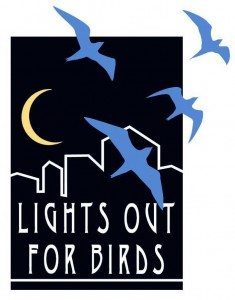 This disruptive effect of urban lights on nighttime migrants is the reason for Golden Gate Bird Alliance’s semi-annual Lights Out for Birds campaign.
This disruptive effect of urban lights on nighttime migrants is the reason for Golden Gate Bird Alliance’s semi-annual Lights Out for Birds campaign.
As part of the Pacific Flyway, we have over 250 species — from tiny warblers to large raptors — passing through our region each year. Bright city lights may disorient them or lure them into deadly window collisions. So each spring and fall, we urge Bay Area businesses and residents to dim lights or draw shades at night to help keep these birds on route during their travels.
How can you help?
- At home, turn off unnecessary exterior lights between dusk and dawn.
- At the office, draw blinds if you’re working after dark. Or use task lighting such as a desk lamp rather than overhead lights that illuminate the entire area.
- Talk to your building owner or manager about turning off unnecessary lights or drawing blinds at night. Make sure the janitorial crews that serve your office are informed about Lights Out. Our Lights Out web page has flyers you can share with your employer, janitorial crews, and colleagues, as well as info on PG&E rebates.
- Spread the word on social media! Our Lights Out page also provides some sample tweets and Facebook posts about Lights Out. Use the hashtag #lightsout to help build momentum.
Lights Out at work is particularly important because large office buildings can create masses of light that are visible to birds at a distance. Plus companies can benefit from adopting a Lights Out policy! Turning out unnecessary lights saves energy and reduces utility bills.…

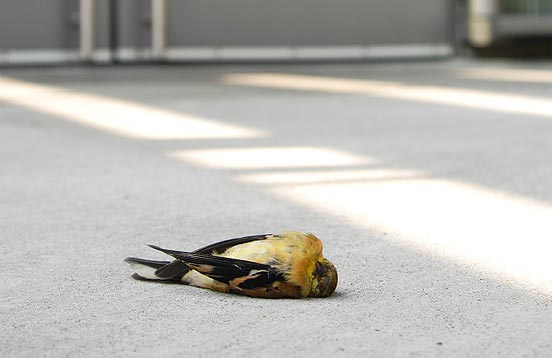

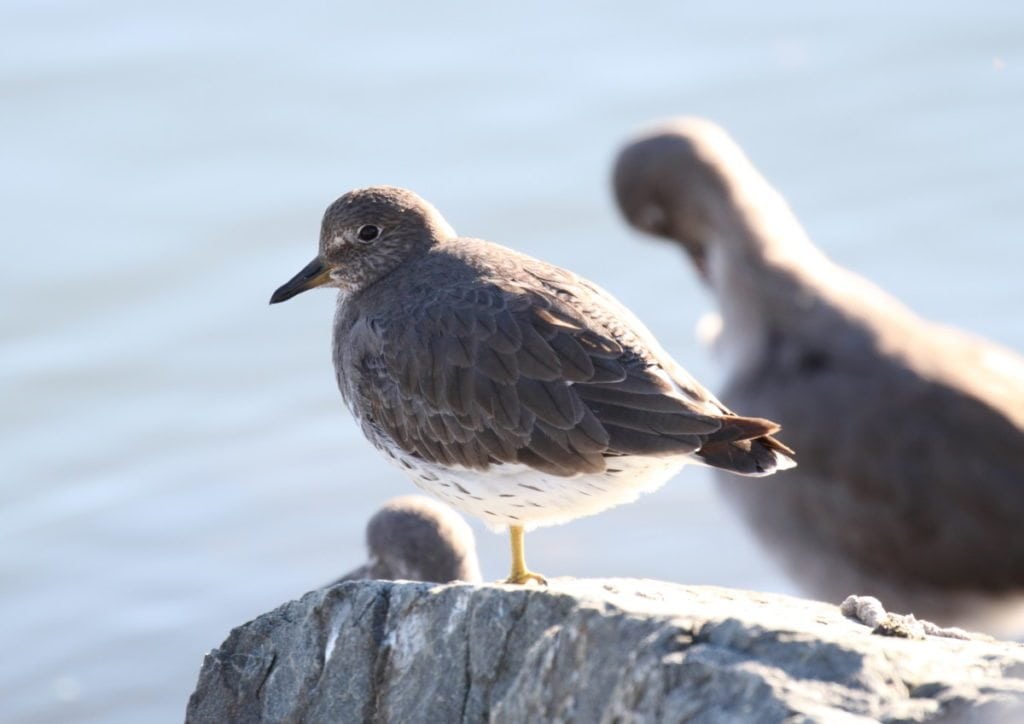 Surfbird by Calvin Lou
Surfbird by Calvin Lou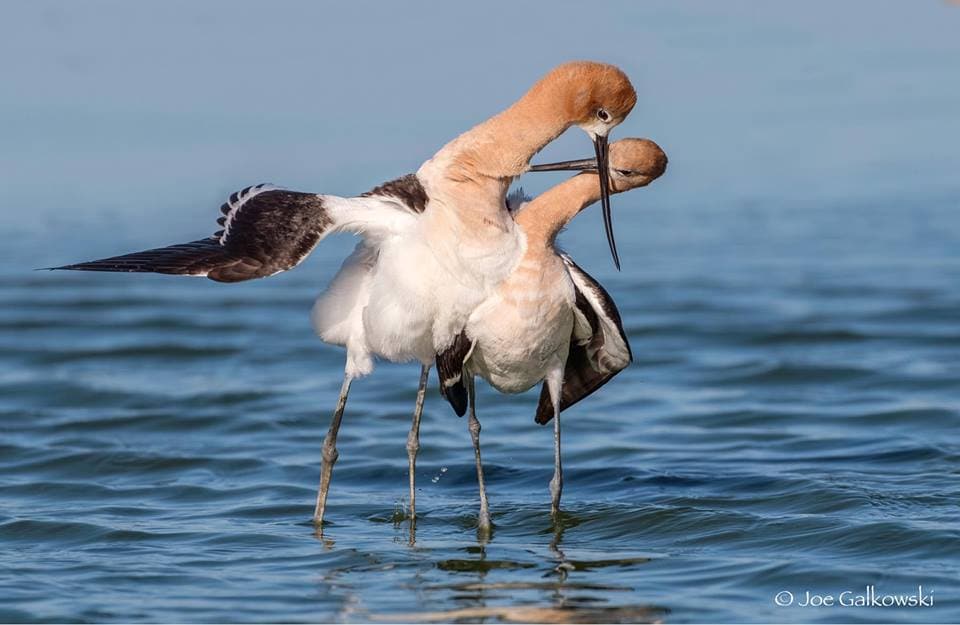 American Avocets courting by Joe Galkowski
American Avocets courting by Joe Galkowski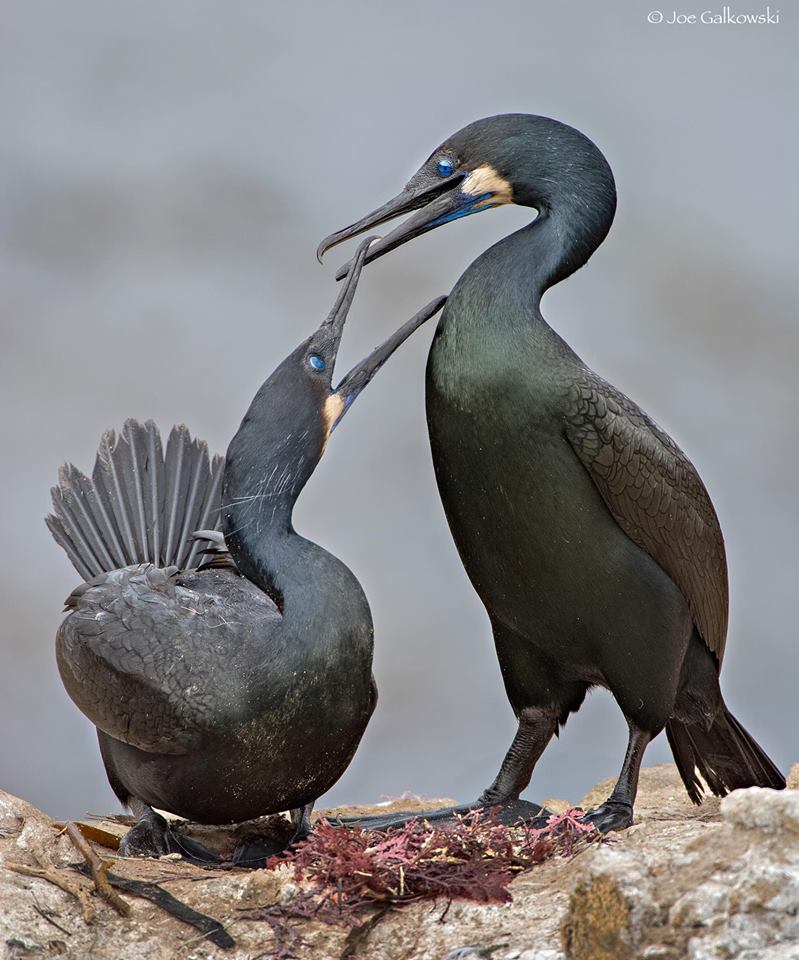 Brandt’s Cormorants courting by Joe Galkowski
Brandt’s Cormorants courting by Joe Galkowski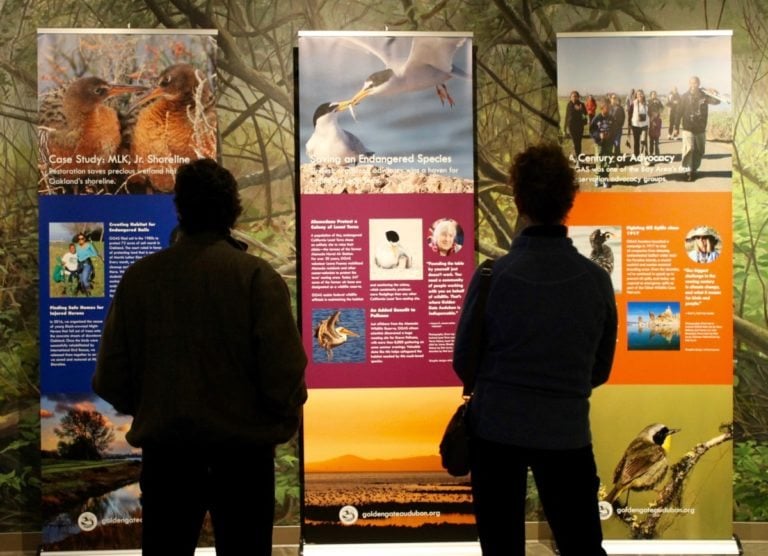
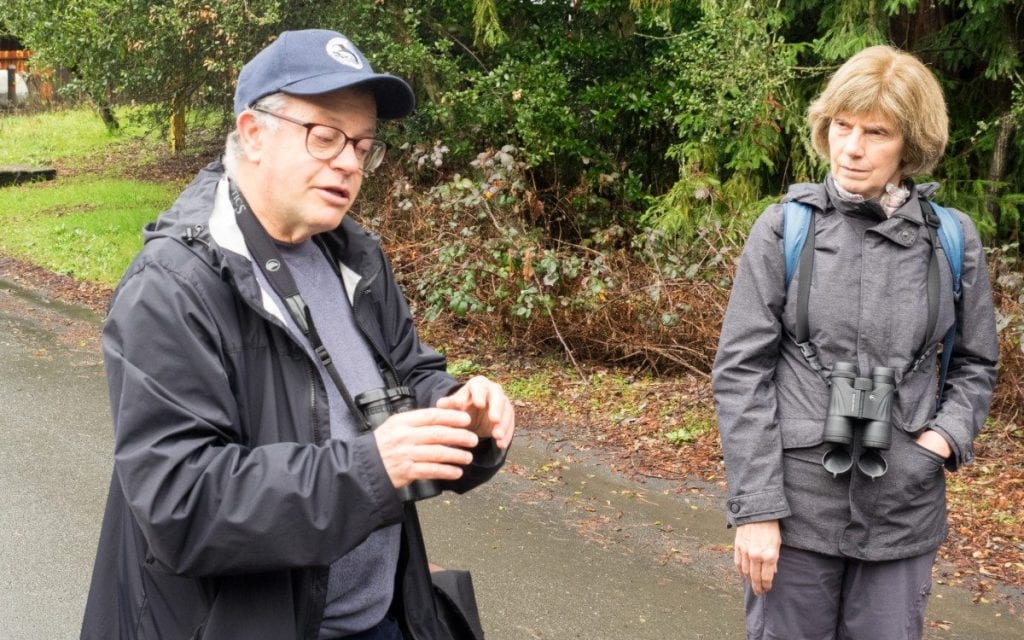 Pre-reception bird walk with Alan Kaplan, winner of our 2016 Paul Covel Education Award / Photo by Denny Scott Parker
Pre-reception bird walk with Alan Kaplan, winner of our 2016 Paul Covel Education Award / Photo by Denny Scott Parker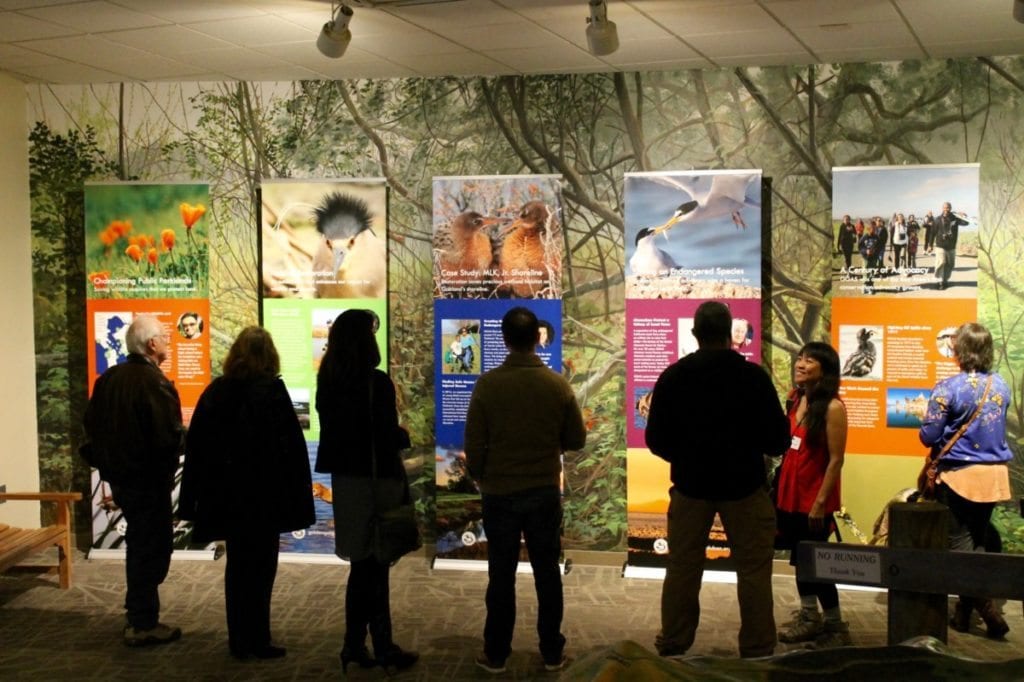 Viewing the Centennial exhibit at the Tilden Environmental Education Center
Viewing the Centennial exhibit at the Tilden Environmental Education Center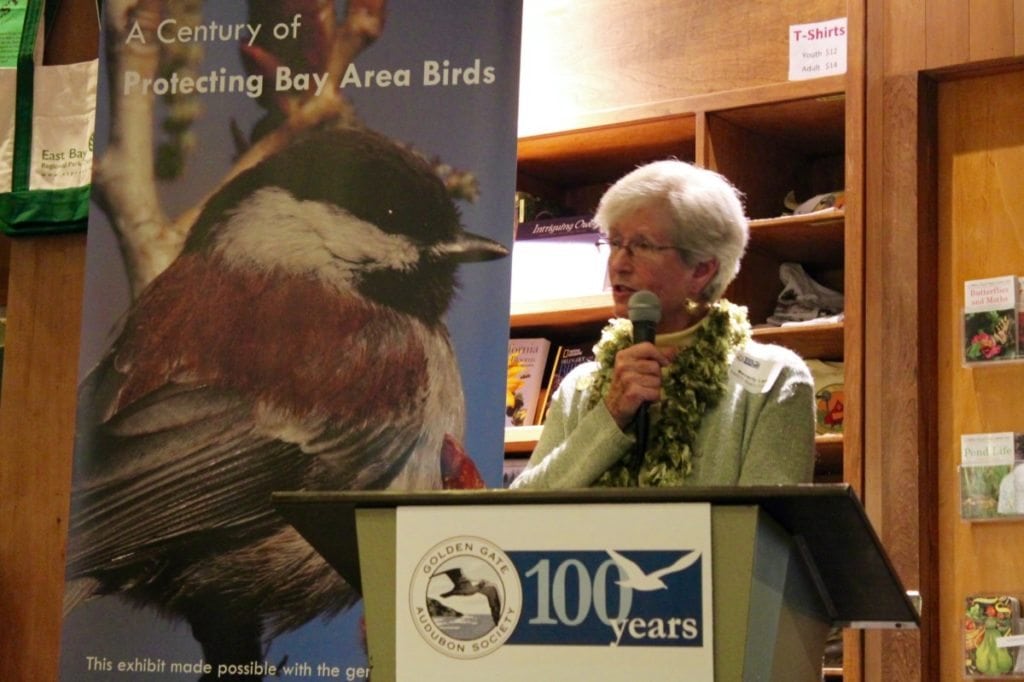 East Bay Parks board chair Beverly Lane congratulates GGBA on our 100th anniversary
East Bay Parks board chair Beverly Lane congratulates GGBA on our 100th anniversary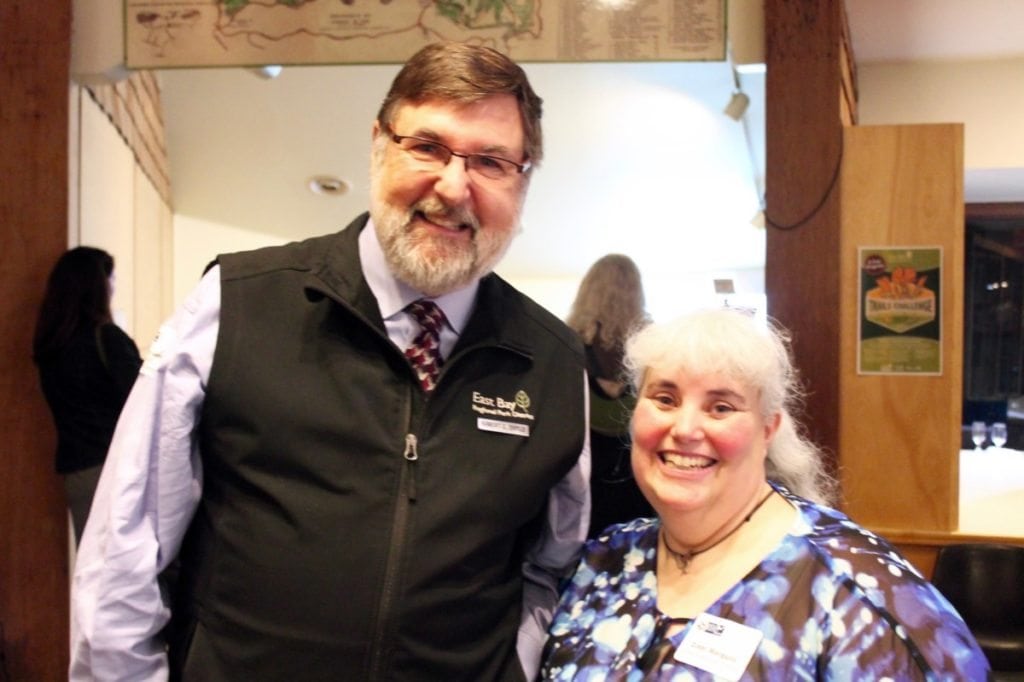 East Bay Regional Parks General Manager Bob Doyle with GGBA Executive Director Cindy Margulis
East Bay Regional Parks General Manager Bob Doyle with GGBA Executive Director Cindy Margulis
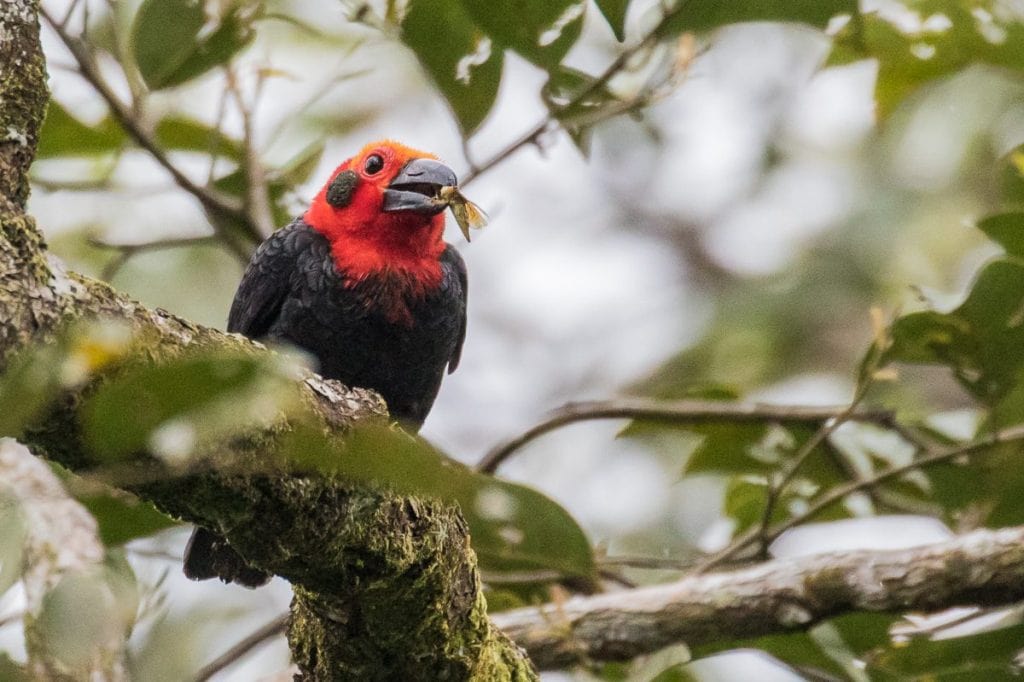 Bornean Bristlehead by Bob Lewis
Bornean Bristlehead by Bob Lewis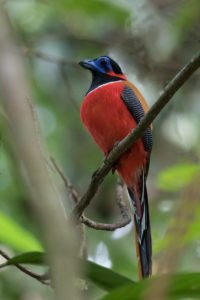 Red-Naped Trogon by Bob Lewis
Red-Naped Trogon by Bob Lewis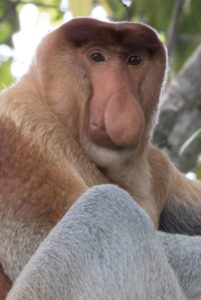 Proboscis Monkey by Bob Lewis
Proboscis Monkey by Bob Lewis Forest being cleared for a palm plantation. Photo by Ulet Ifansasti / Greenpeace
Forest being cleared for a palm plantation. Photo by Ulet Ifansasti / Greenpeace The result of a deforestation fire for a palm oil plantation. Notice the black canal. Photo: Alexander Hotz / Coconuts Media
The result of a deforestation fire for a palm oil plantation. Notice the black canal. Photo: Alexander Hotz / Coconuts Media A monoculture palm oil plantation, owned by PT. Photo courtesy of Greenpeace.
A monoculture palm oil plantation, owned by PT. Photo courtesy of Greenpeace.